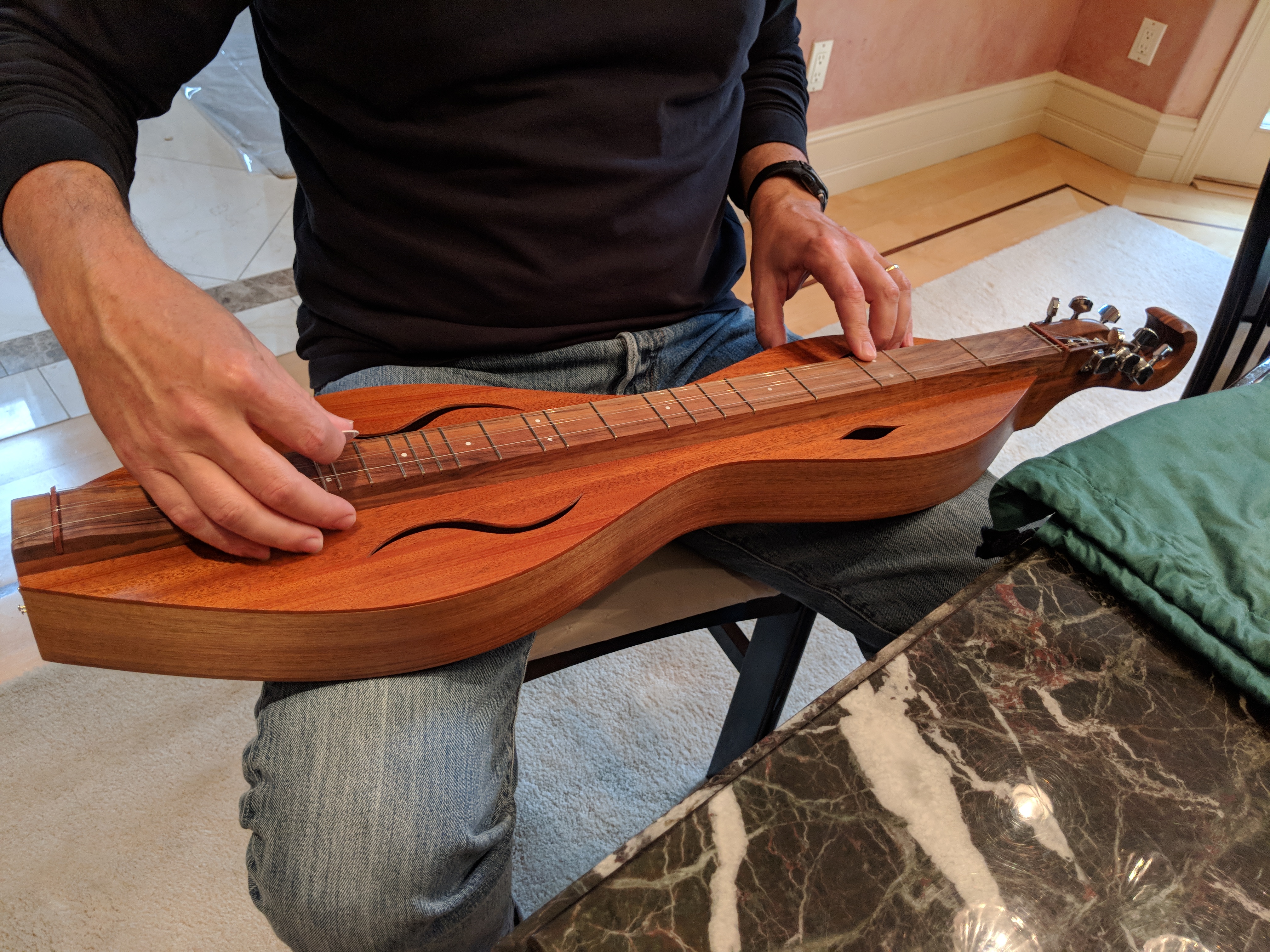
I interviewed Mr. Willis, a Priory parent who built a Mountain Dulcimer in
December of 2016. Here is a paraphrased transcript of our conversation.
- Can you describe when you first began woodworking? Who exposed you to it?
- I started woodworking when I was young. There was never specific day when picked it up, I just always remember doing it. My father was a woodworker, even more so than I am. He had a woodshop and got me into woodworking.
- Great. And what kinds of things did you build?
- So, woodworking has been more of a hobby of mine throughout the years. I've always struggled to find enough time for it. Right? I started with more handyman type jobs when I was younger, and I have progressed to more advanced projects such as my dulcimer in recent years. It has really come in handy when something in the house needs fixing.
- Where do you woodwork now?
- I have my own set of tools. There's a space dedicated to them in the garage. I recently have made more room for tools used to create things like instruments because I've grown interested in making them as opposed to something like a cabinet for the house.
- Have you ever built anything where you tried to interweave your cultural or family background into the product?
- Not really. As I mentioned earlier, this dulcimer was the first "art" piece I've made out of wood, and I haven't really used woodworking to express any deeper ideas.
- Now lets transition and talk a little bit more about your dulcimer. What style did you choose? What are some of its features?
- My dulcimer is an hourglass shape, although I know teardrops are fairly popular too. Which type are you building?
- I'm building an hourglass shaped dulcimer as well. I actually have the headstock here if you'd like to see it...
- (I proceed to share about my dulcimer. The woods I chose, pictures, etc.)
- Anyways, I use walnut all the way around, much like you did, but with mahogany on top. However, I built mine from a kit as opposed to your approach from scratch. Therefore, it only took about 2 weeks for me to finish my dulcimer.
- Wow, two weeks only?
- Well, it was two weeks working 8 hours a day (over Christmas break), and starting with a kit, I was able to skip the parts like steaming and cutting wood. By the time I got it, most of the work was by hand. I basically only used a chisel and other hand tools to finish the dulcimer.
- Excellent. Now, what inspired you to build a dulcimer>
- Now, what's really interesting is that Father Martin is the one who sparked my interest. He's built a number of dulcimer, but other wooden instruments too, and there was a parent party where he showed a few of them off. I saw his dulcimer and decided to build one myself.
- Amazing, Father Martin is actually me mentor in this process, and It has been a phenomenal experience working with him to build a dulcimer.
- That's really cool you're able to work with him. Yeah, Noah was building a boomerang with Father Martin, or finishing it or something, and Father Martin had one of his dulcimers up there. I was able to see it, and play it (this was some time after the party), and that experience pushed me even more to build a dulcimer.
- I love it. Now, could you tell me which part of the dulcimer you spent the most time on?
- Yes. The headstock took the longest because I changed it the most from what it originally arrived as. It originally was much larger, and I shaved off much of it in order to get this the curves I have now.
- How about the hardest step in the process?
- Despite the head stock taking the longest, the hardest part was putting the instrument all together. When I tried to attach the top and bottom to the sides, I had trouble getting a firm seal. I needed multiple attempts, but eventually I was able to seal the sides to the front and back.
- I can see this is a very beautiful dulcimer. But in hindsight, would you have done anything differently?
- Other than being more careful when gluing the sides to the end blocks to make the attachment of the sides and front easier, I would have hollowed out the underside of the fretboard. Sometimes, luthiers choose to choose out the fretboard to get a better sound, I didn't, but for the amount of time I spent, I wish I had taken that extra step.
- Amazing. I love hearing about your experience building a dulcimer. That's all of the specific questions I had. Is there anything else you would like to share about the build process?
- Yes. As you approach the finishing of your dulcimer, you will need to choose what you would like to coat your instrument with. I used a lacker for the body, which gives it this nice shine. However, I used teak oil for the fretboard because oils from fingers wear down lacker quickly. So you'll need to research and choose what kind of finish you want for your dulcimer.
- Ok, thank you for the advice, and thank you for meeting me today, Mr. Willis
- My pleasure!